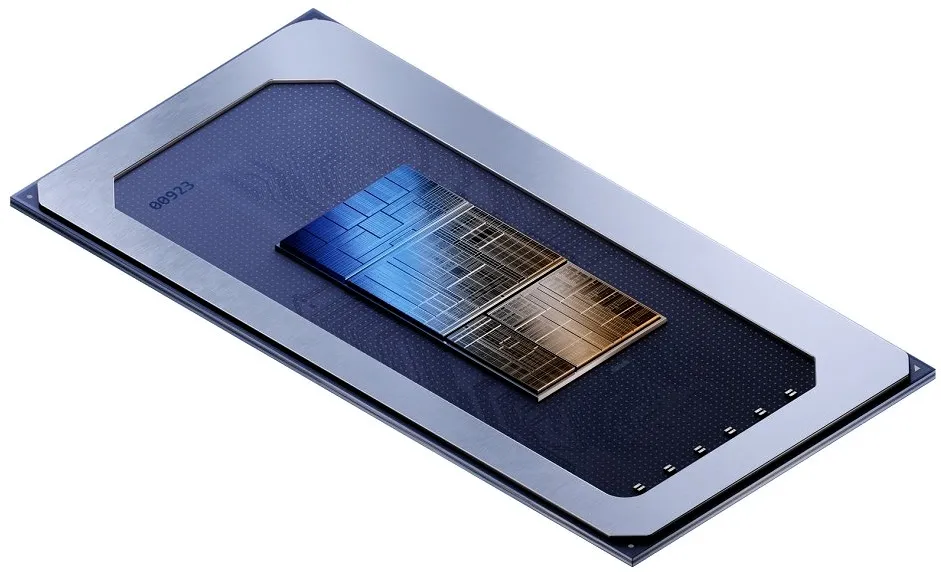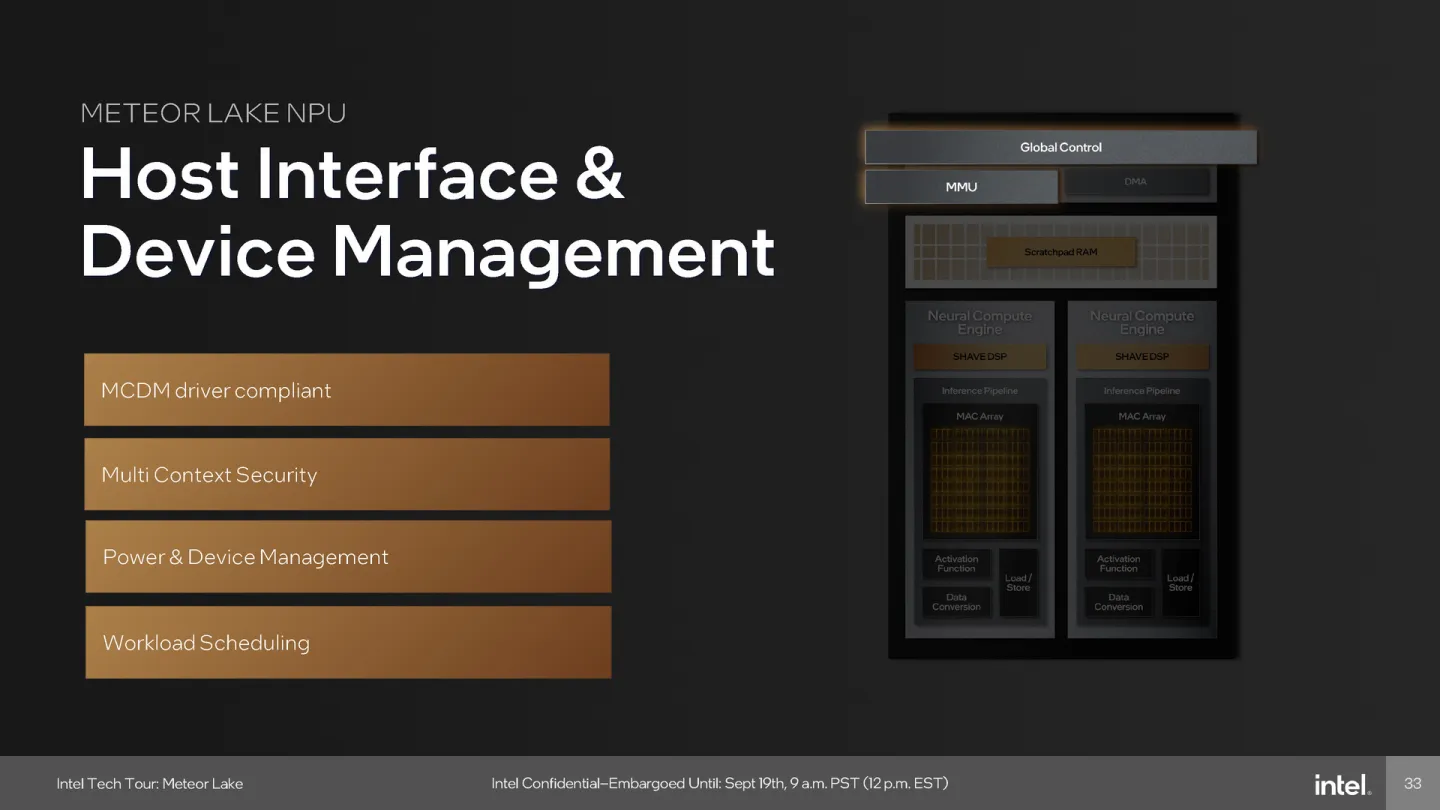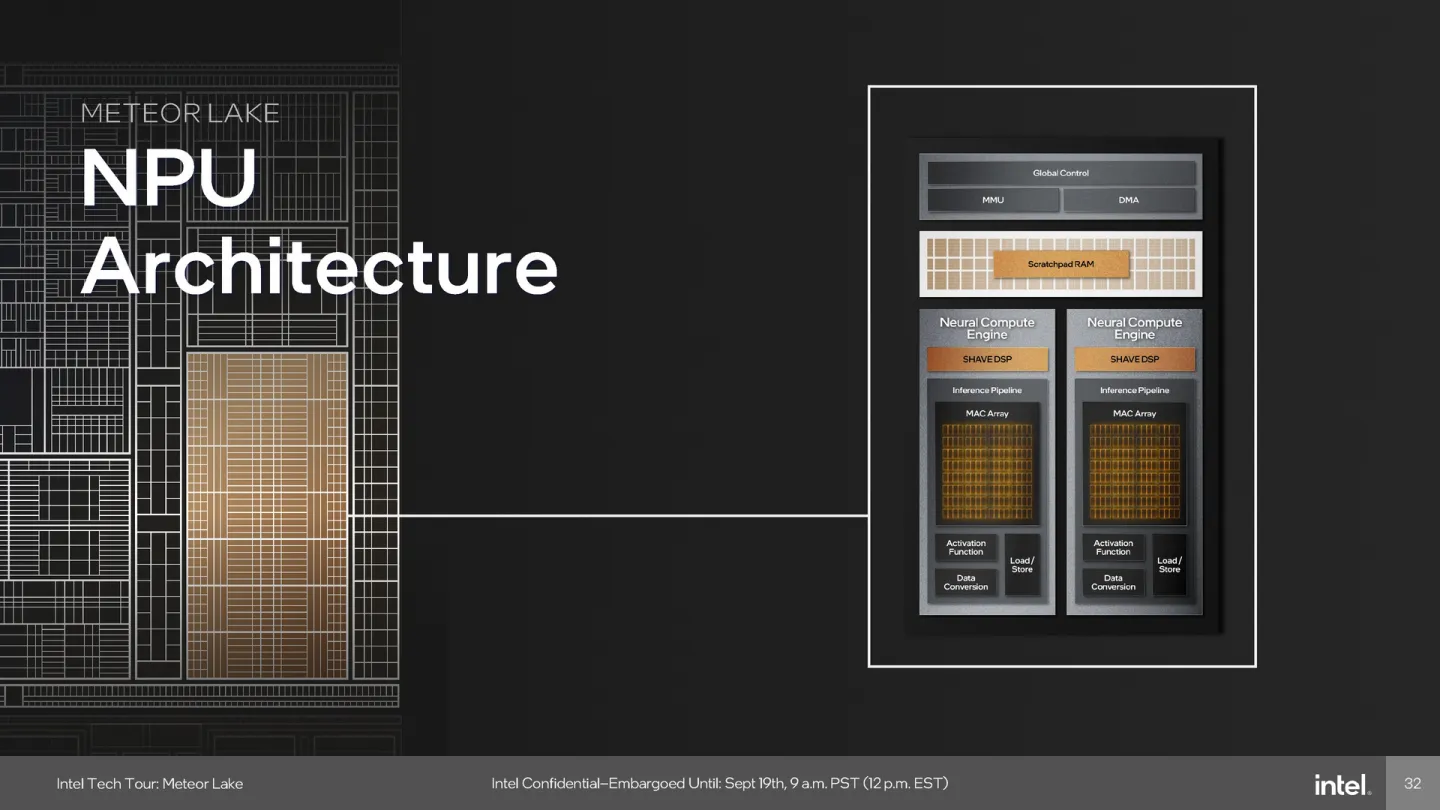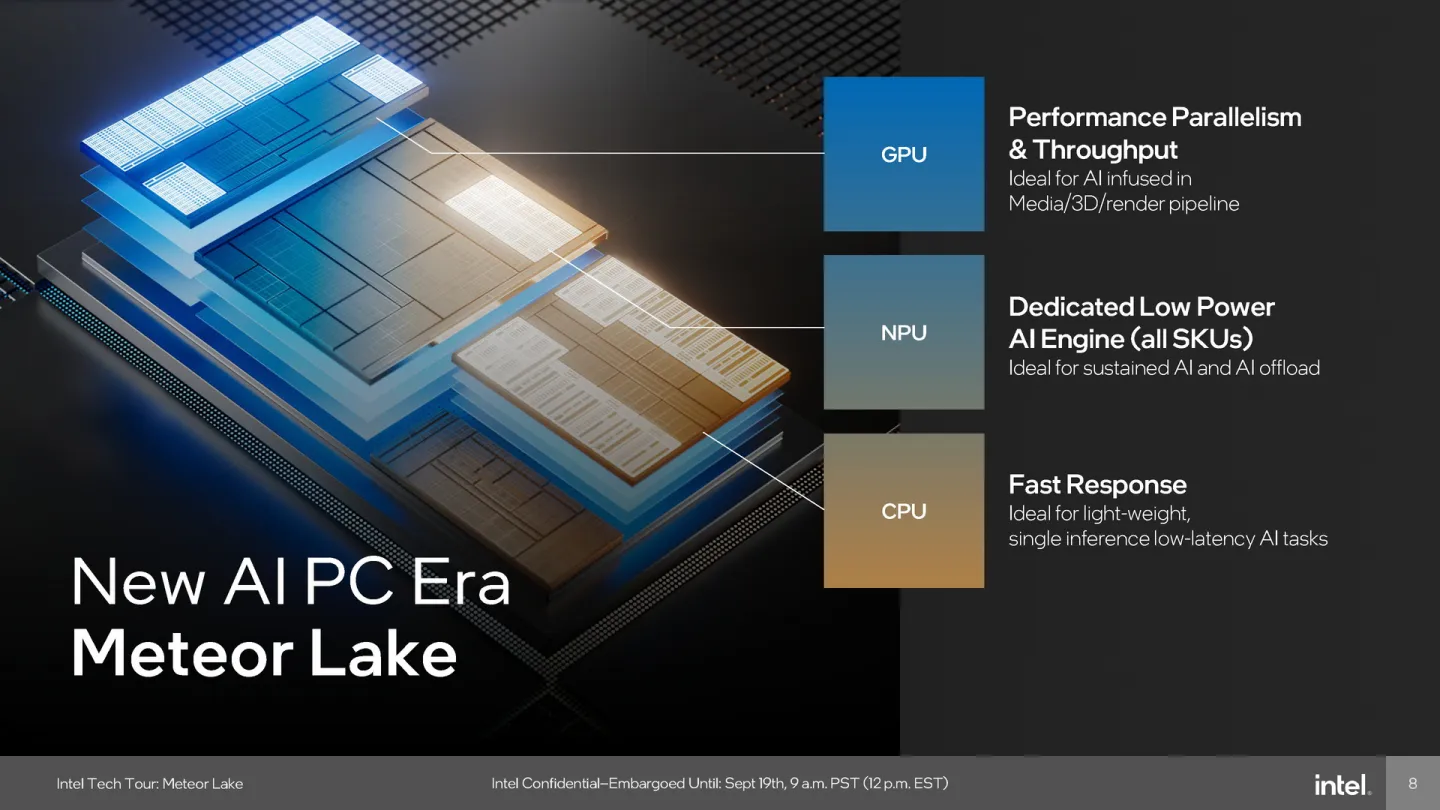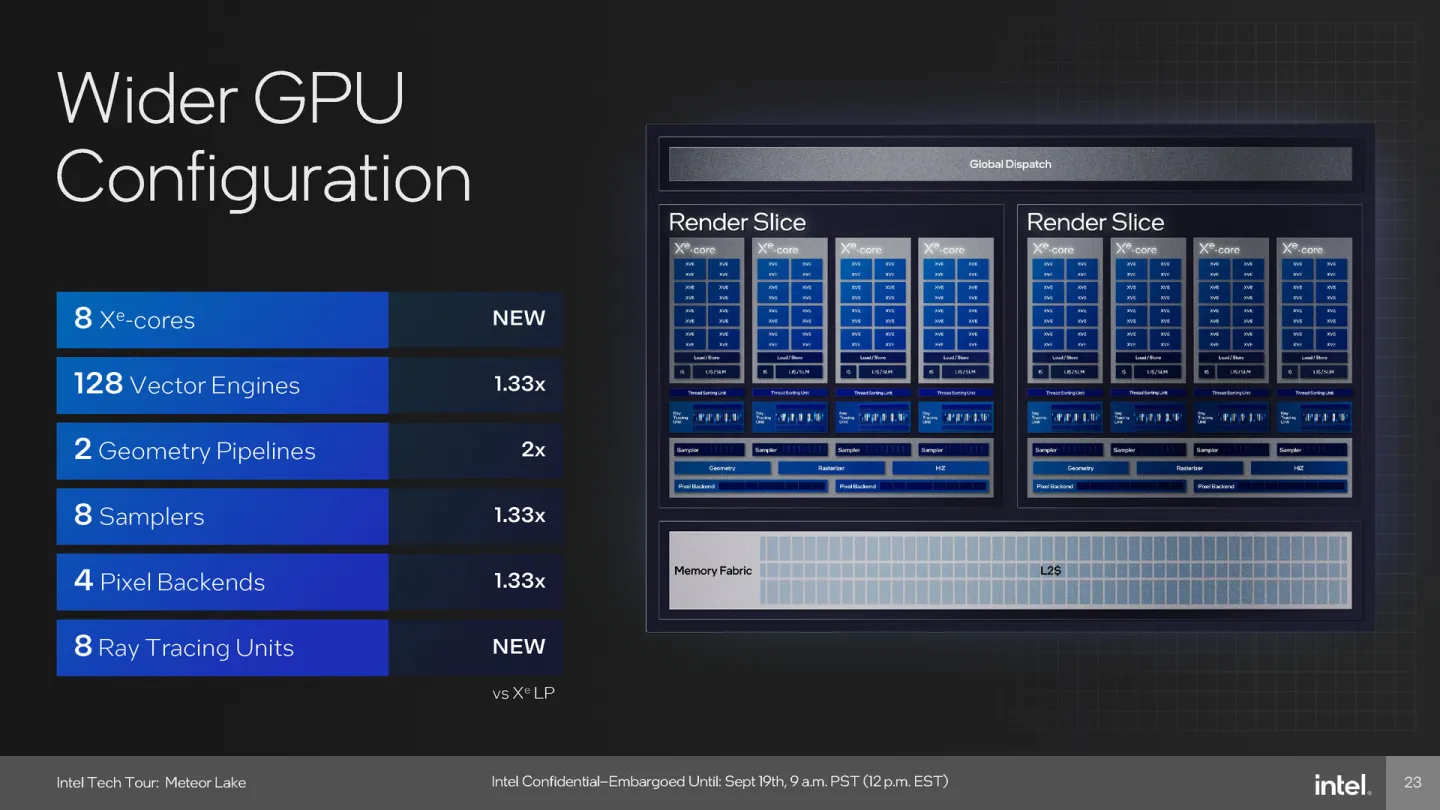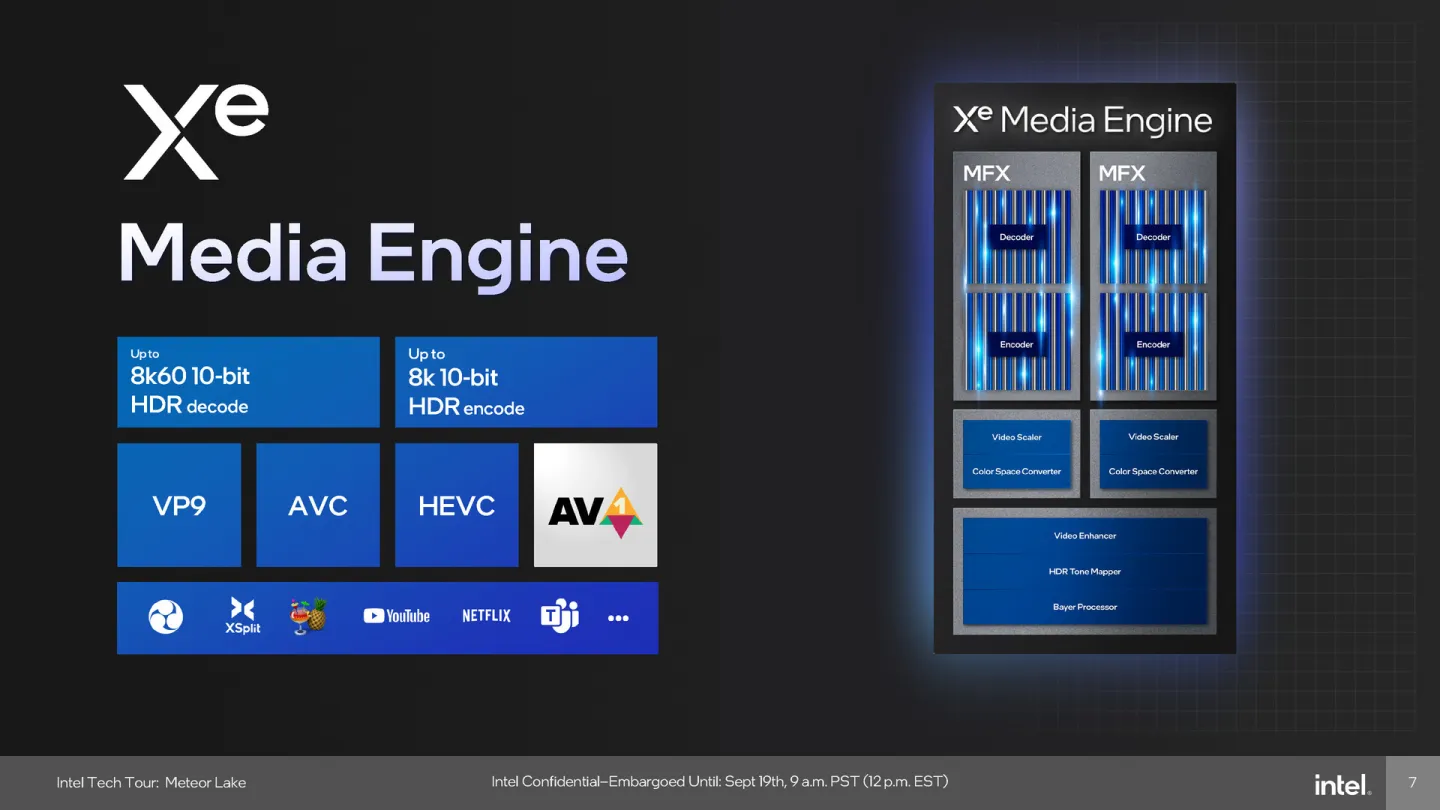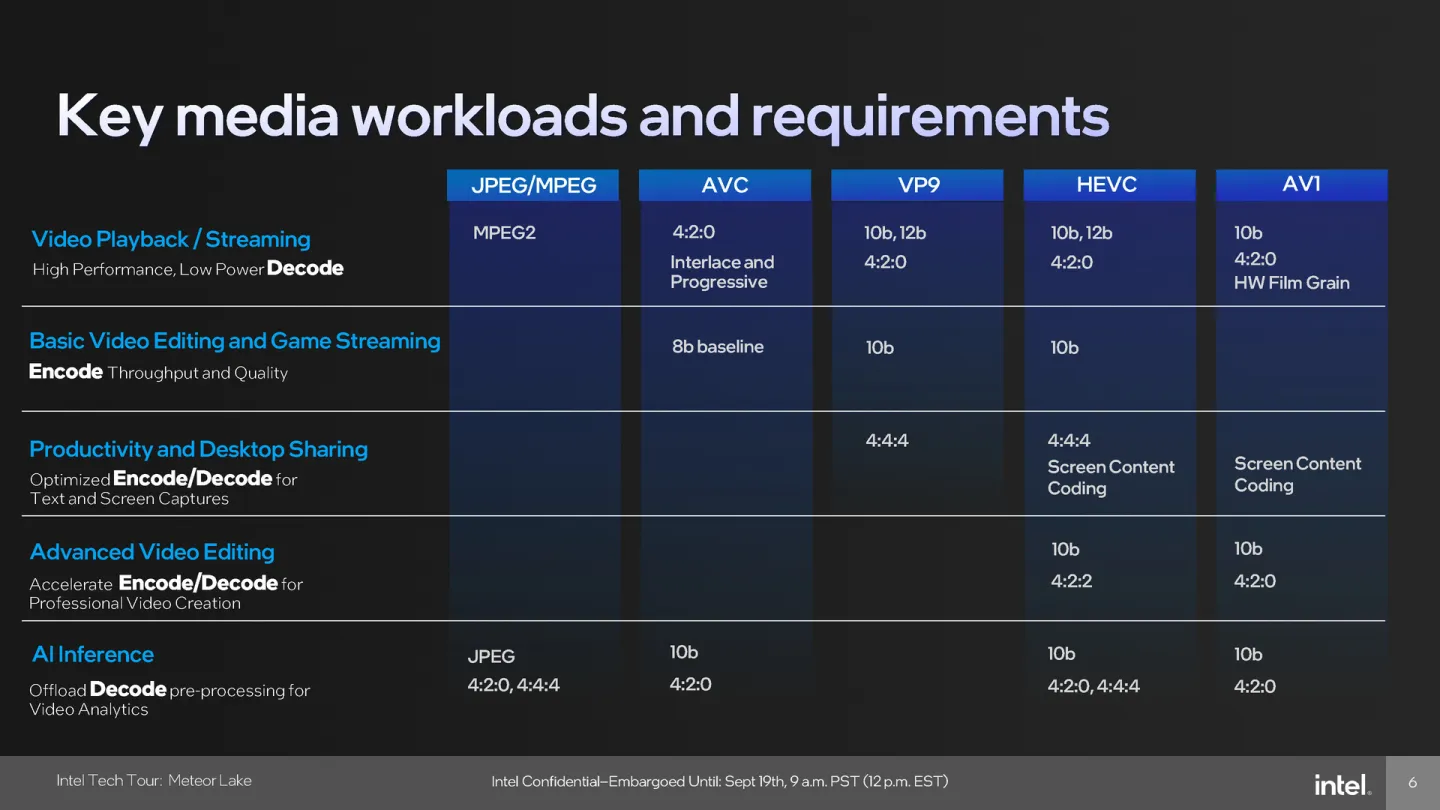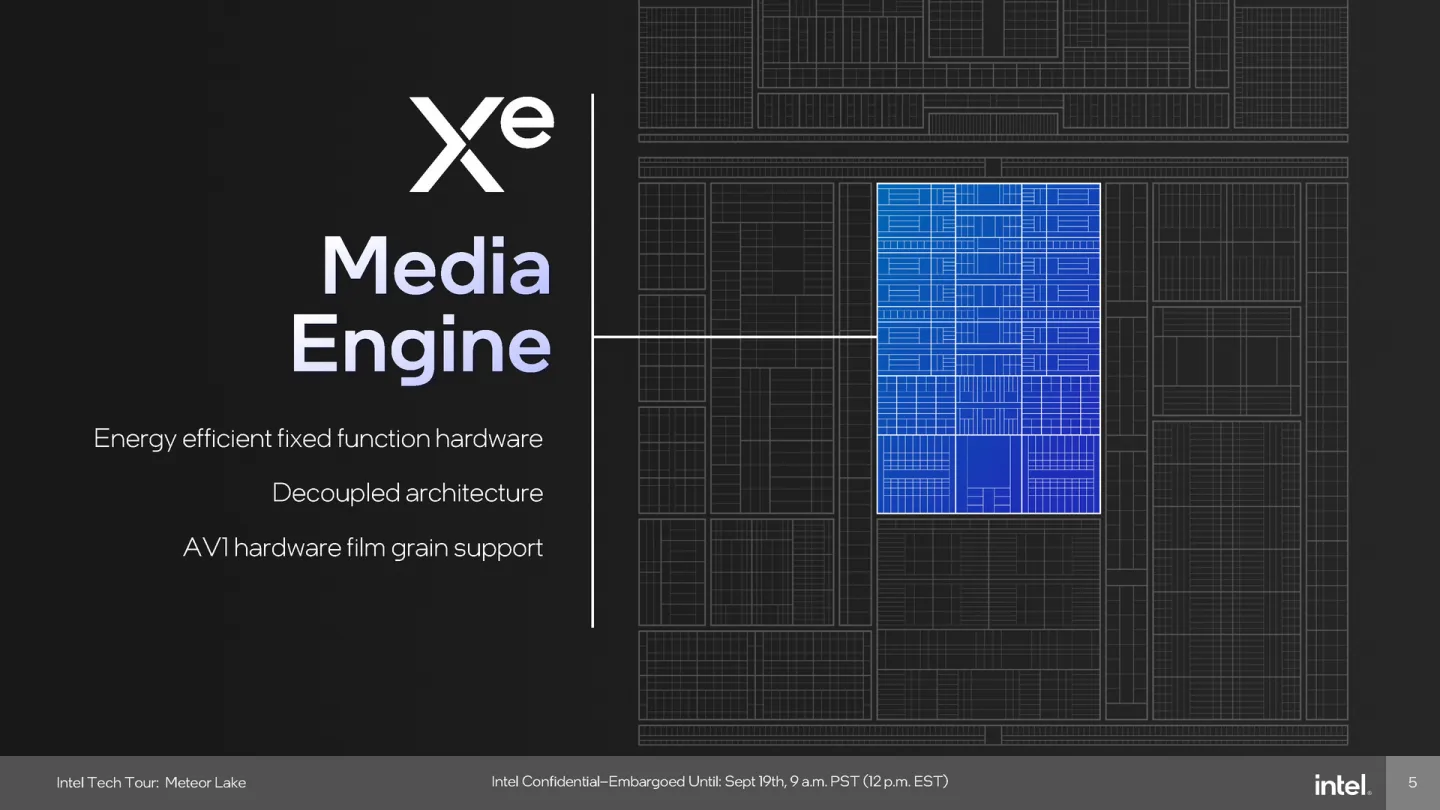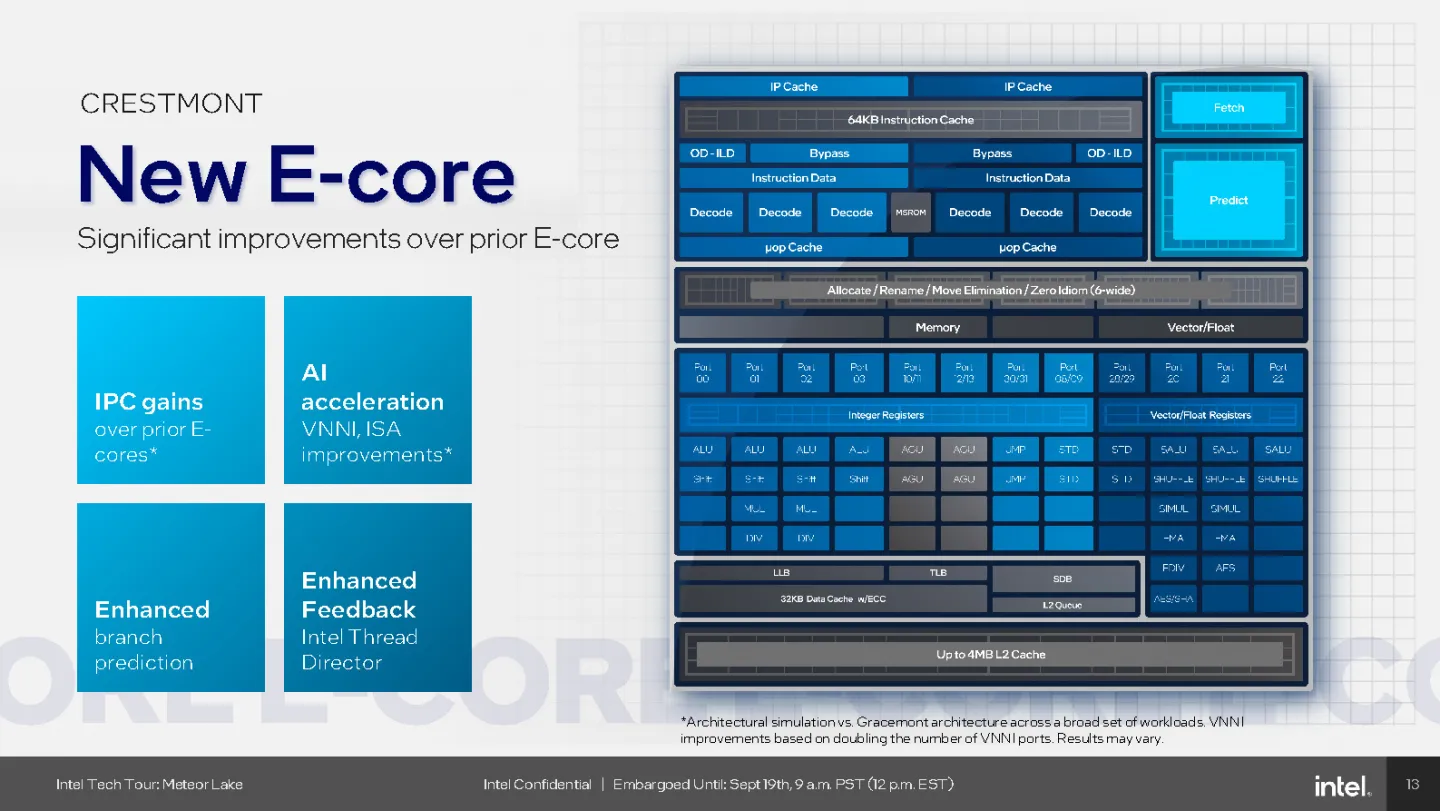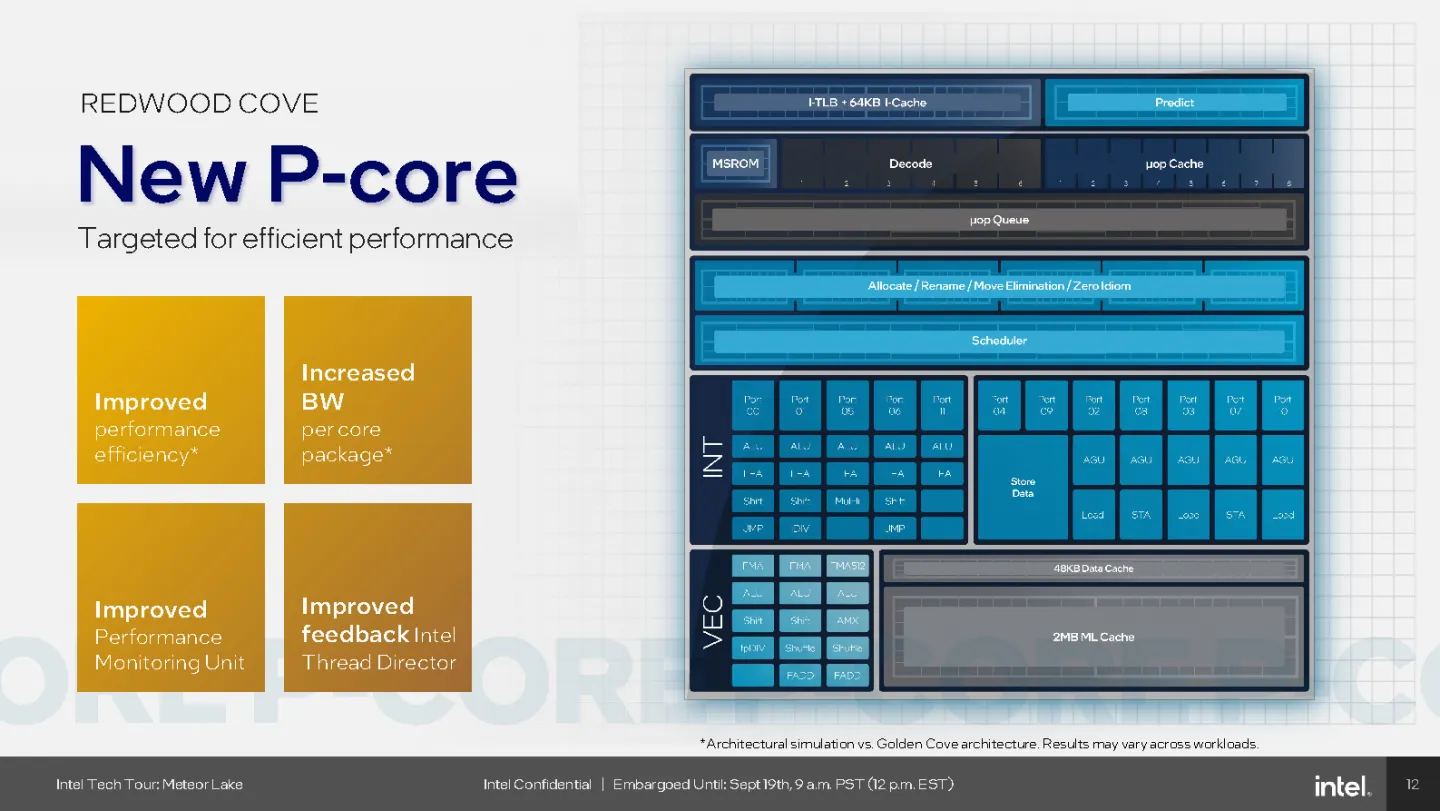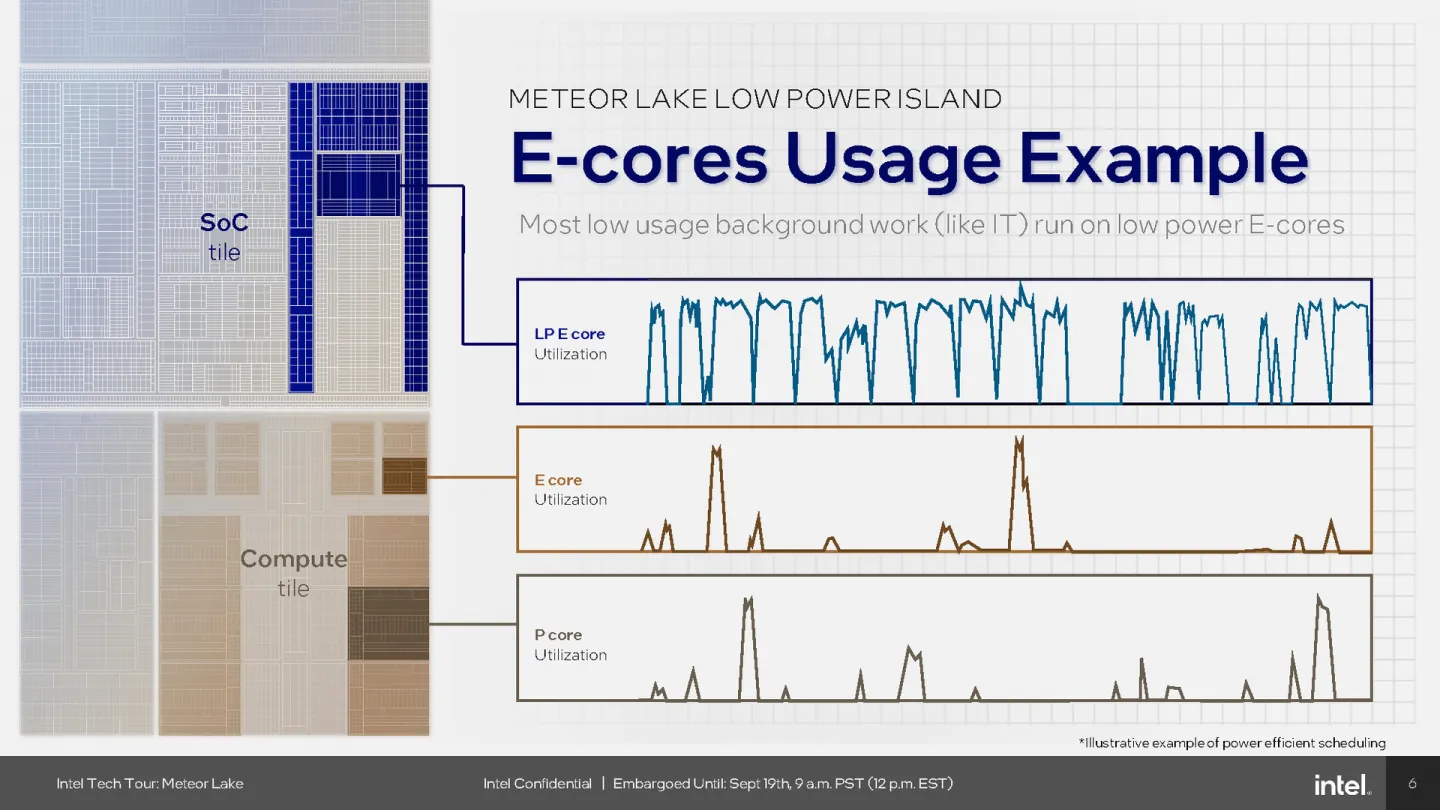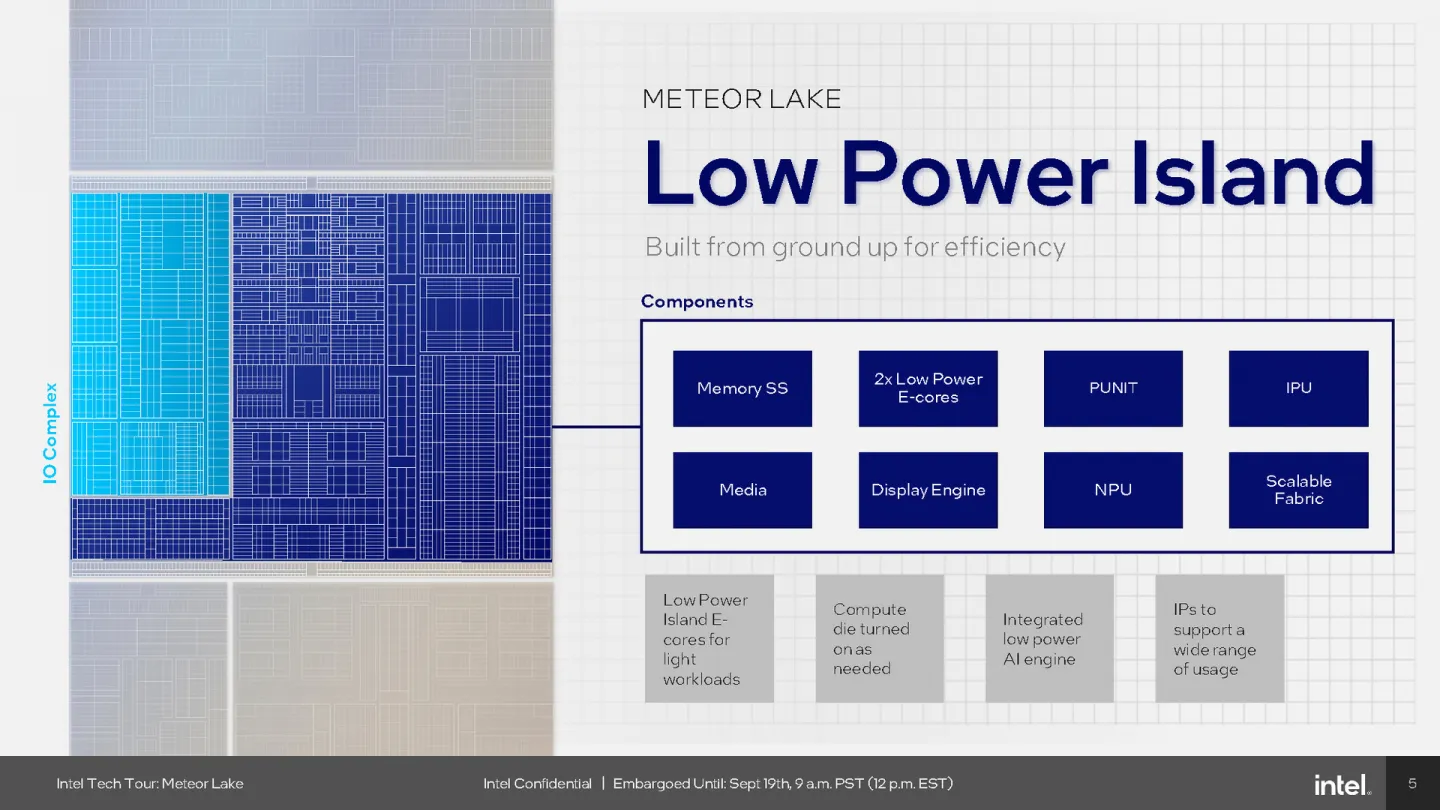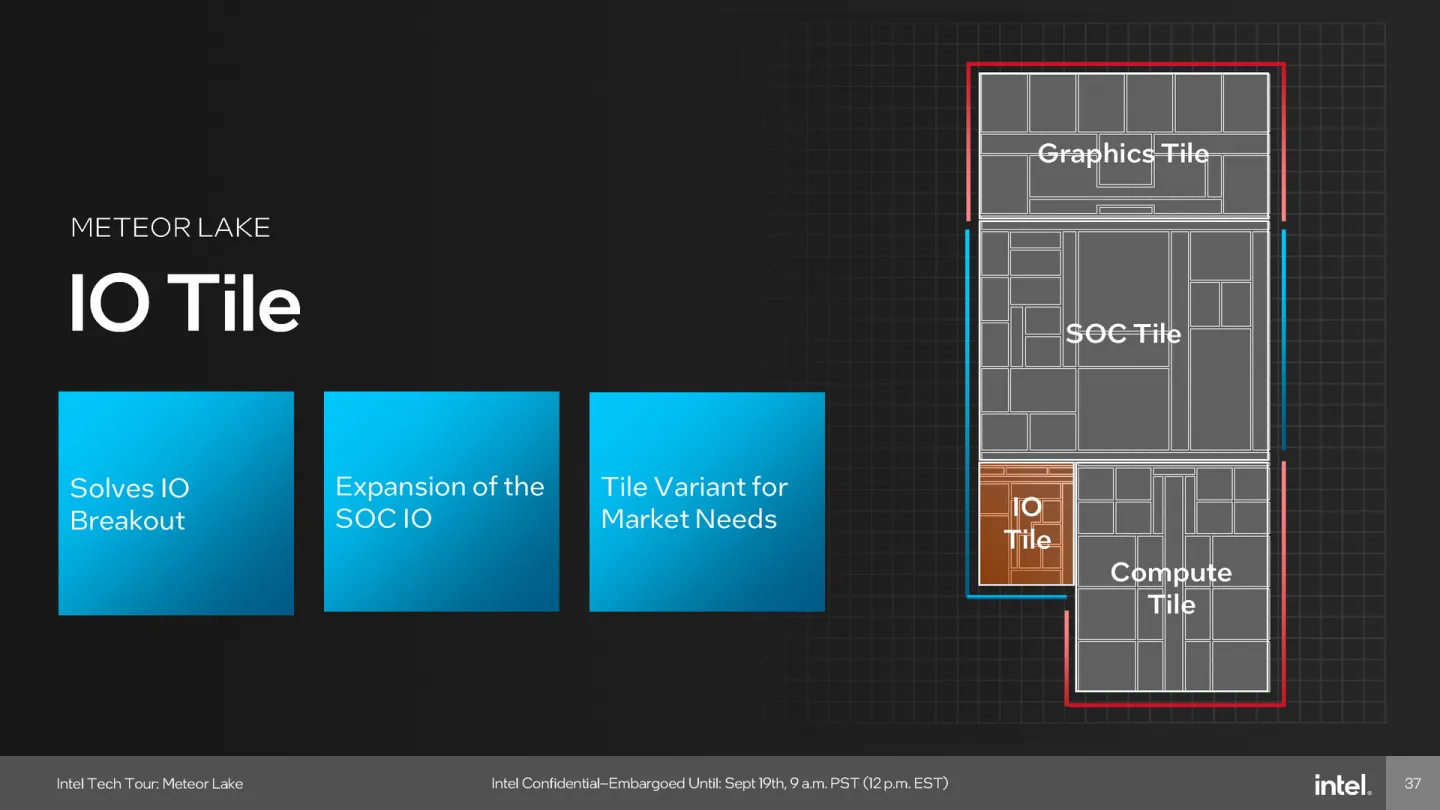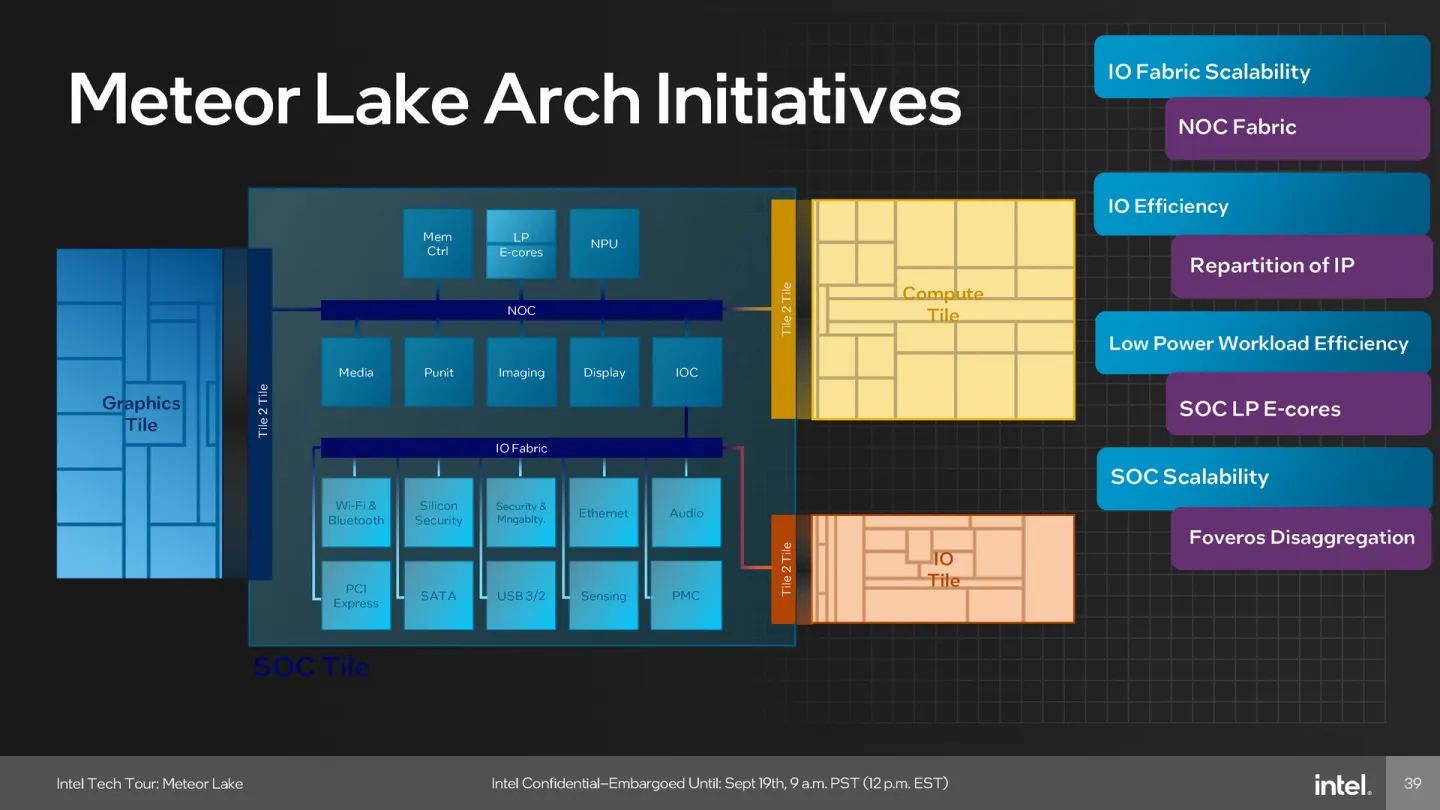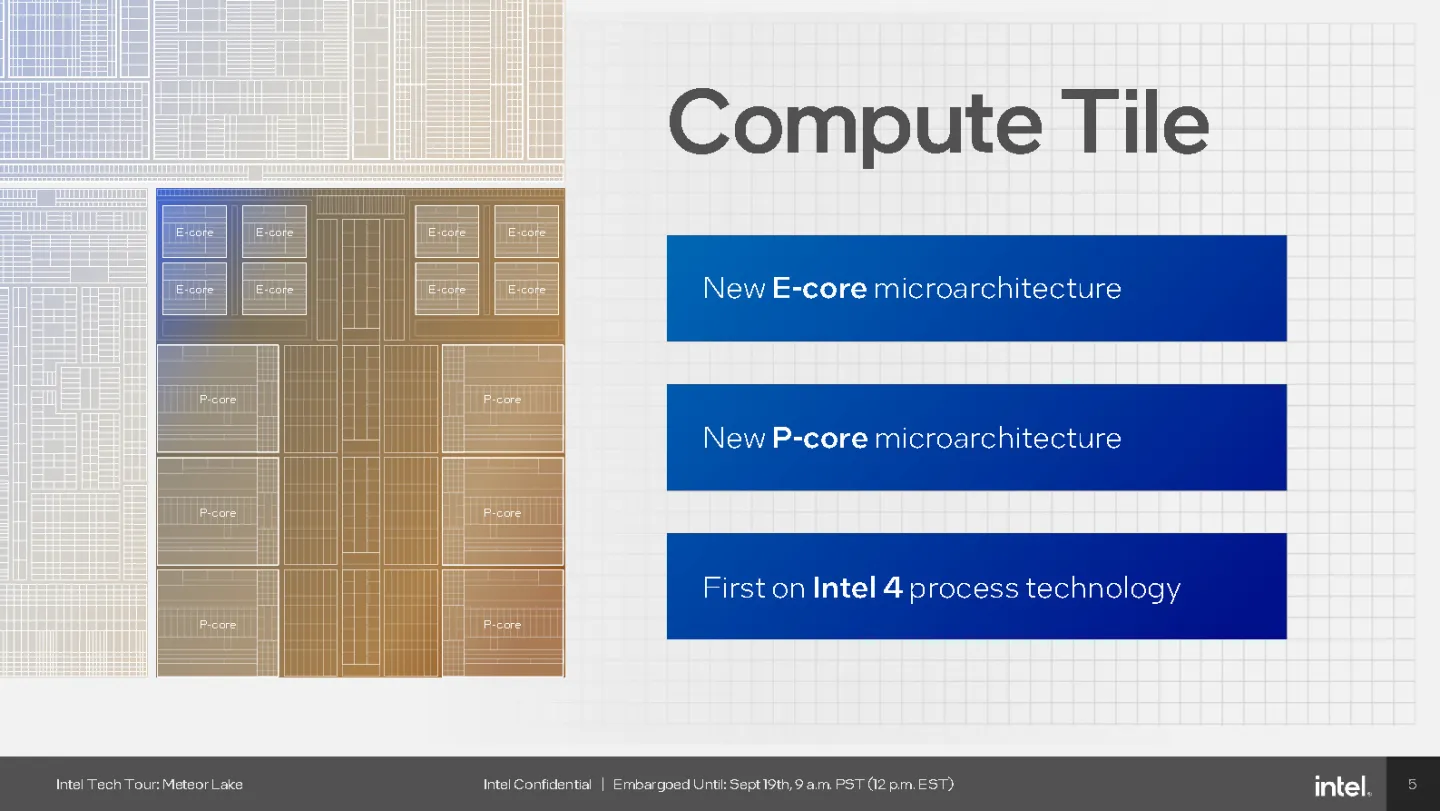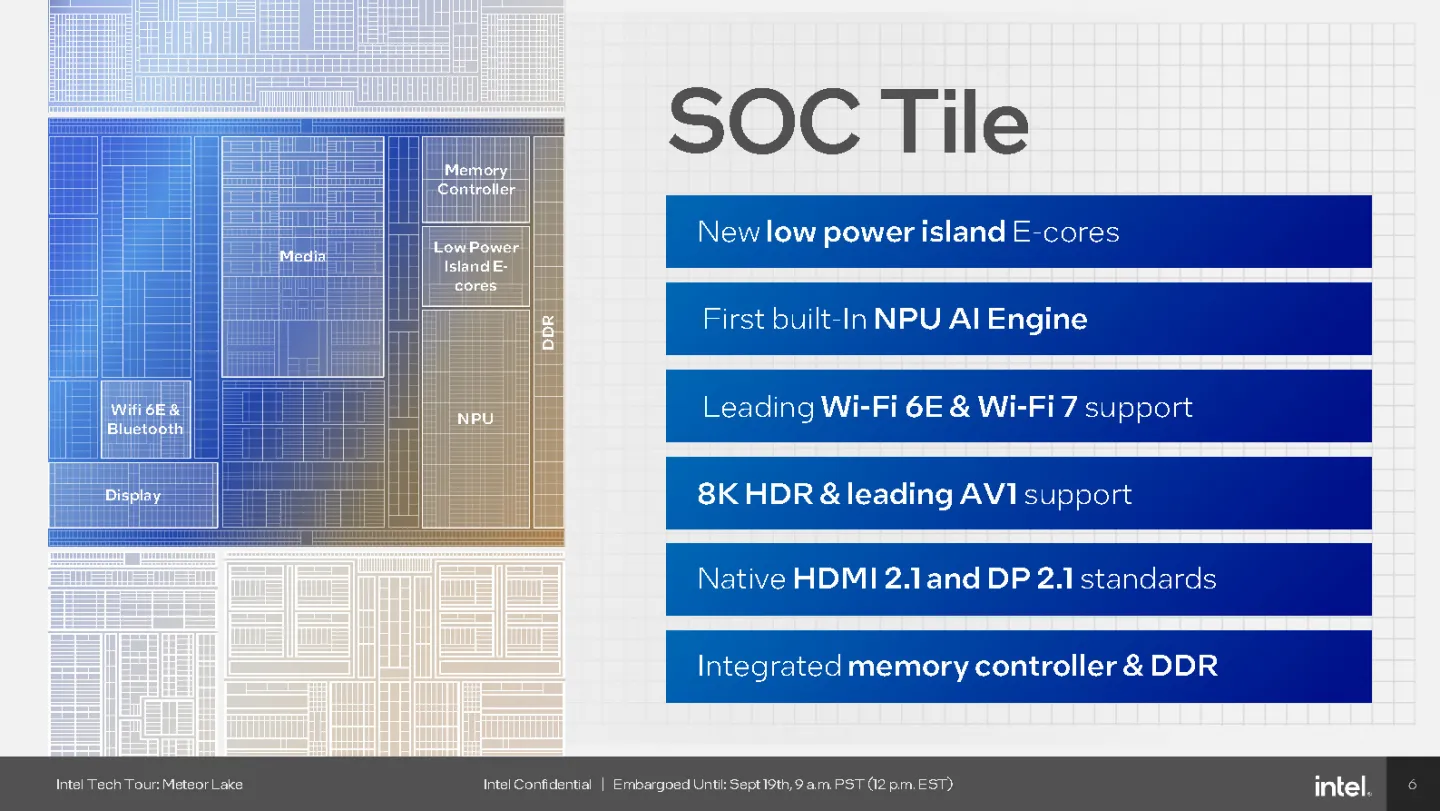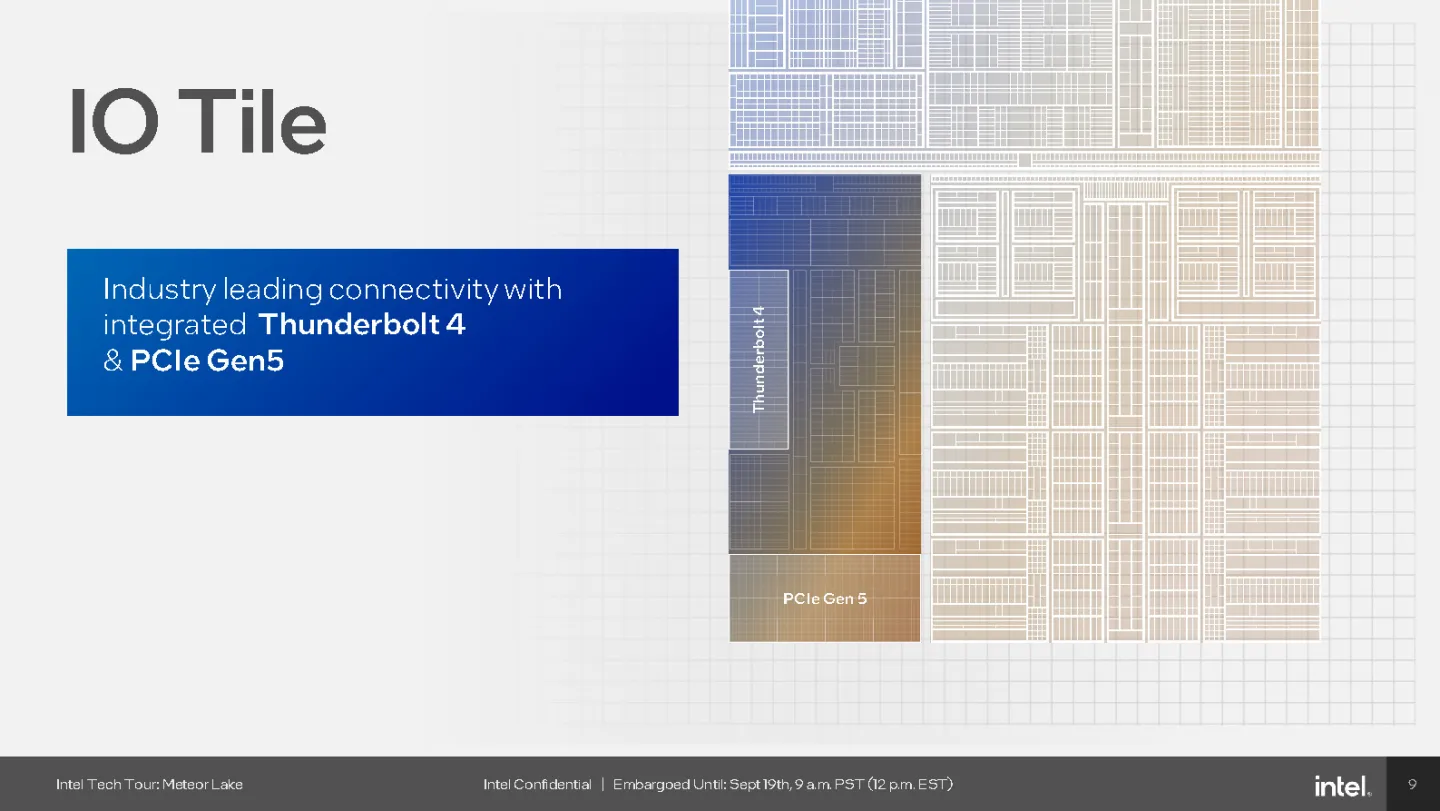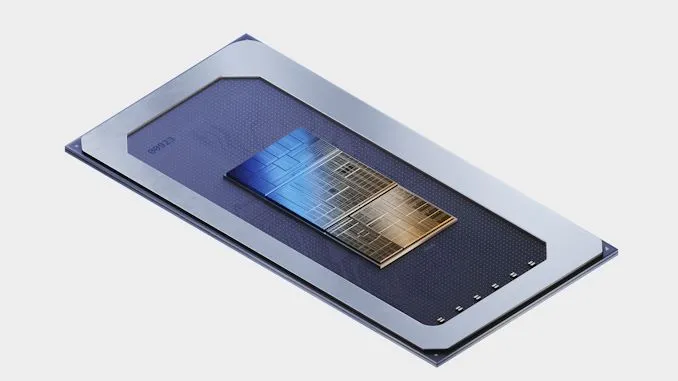One of the distinguishing features of the Meteor Lake CPUs is their innovative disaggregated design. Unlike traditional chip architectures, these processors employ a strategy where various components of the chip are manufactured on separate process nodes. These components are then stacked together using Intel's cutting-edge 3D Foveros packaging technology. Intel's Meteor Lake is a composite product that utilizes the Fovoros technique, a well-established methodology previously employed in Lakefield and Ponte Vecchio chips. This article delves into the technical aspects of Meteor Lake's design and functionality.
Fovoros Technique in Meteor Lake
Meteor Lake undergoes a meticulous production process, ensuring high yield rates. Individual testing of tiles is conducted before they are assembled on a Fovoros wafer, cut, and mounted on a substrate, which is subsequently reinforced. Post-assembly, each chip undergoes rigorous testing, including compatibility assessments on Windows and Linux platforms within the factory.
Tile Composition
Meteor Lake comprises four primary tiles:
- CPU Tile: Utilizing the Intel 4 process, it houses the processor cores.
- Arc GPU: The graphics processing unit.
- I/O Tile: Managing input and output functions.
- SoC Segment: Serving as the central hub for component connectivity.
CPU Tile Features
Within the CPU tile, Intel employs the Crestwood E-cores with Thread Director for enhanced predictive capabilities, resulting in incremental speed improvements compared to its predecessors.
Compute Tile Configuration
The compute tile integrates Redcove P-cores alongside Crestwood-based E-cores. The SoC segment features additional energy-efficient E-cores designed for basic tasks. This segment is also equipped with AI technology and supports Wi-Fi 7, HDMI, and DisplayPort.
SoC Autonomy and Efficiency
The SoC tile functions autonomously from other Ultra processors' components. It handles media decoding, eliminating the need for GPU activation during video playback, thereby conserving energy. Additionally, the memory controller is located within this tile.
Inter-Tile Communication and Scalable Fabric
The SoC tile facilitates communication among power management controllers in the other three tiles. A scalable fabric ensures seamless interaction among various components of the Ultra processors.
Integrated GPU - Xe LPG
The embedded GPU, known as Xe LPG, boasts 8 Xe-Cores, 128 vector engines, and 8 hardware ray tracing units. While it may not match the performance of dedicated GPUs, it adequately serves casual gamers. Note that the GPU was previously referred to as the Arc GPU within this context. In conclusion, Intel's Meteor Lake is a technically advanced product utilizing the Fovoros technique and featuring a range of specialized tiles optimized for various functions within the Ultra processors. Intel has also confirmed that Meteor Lake CPUs will support the PCIe Gen5 interface, USB4, and Thunderbolt 4.

